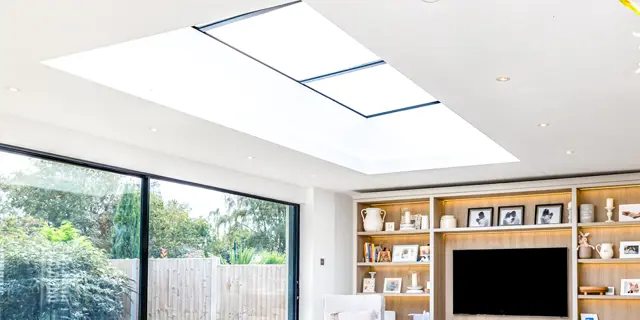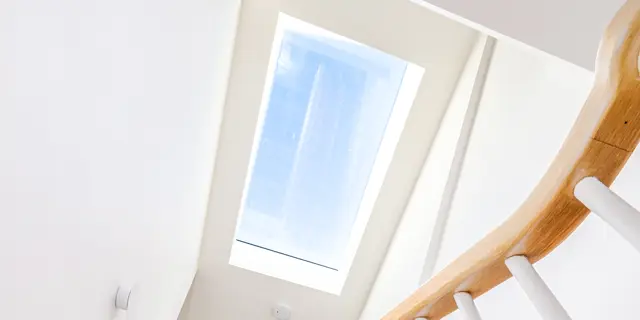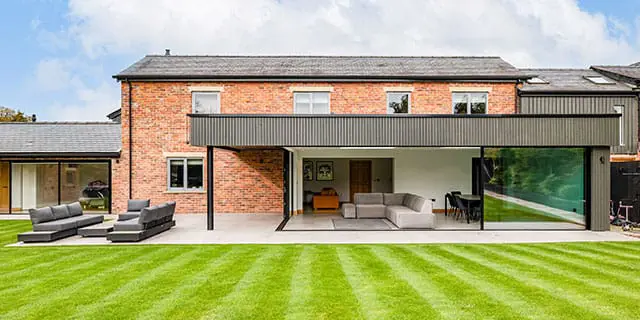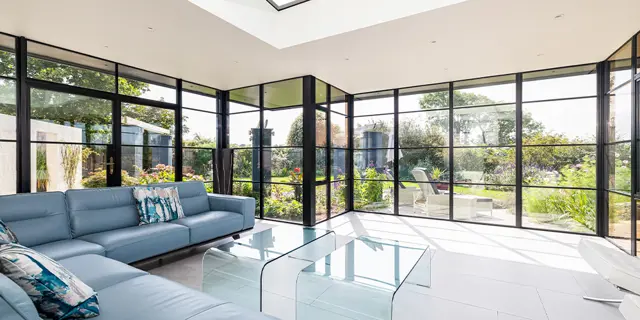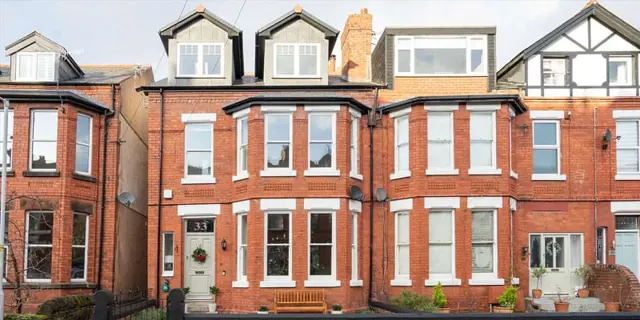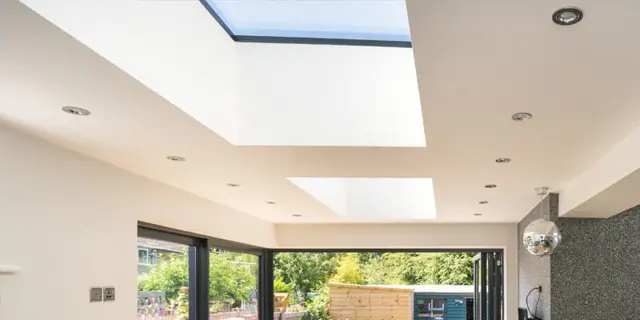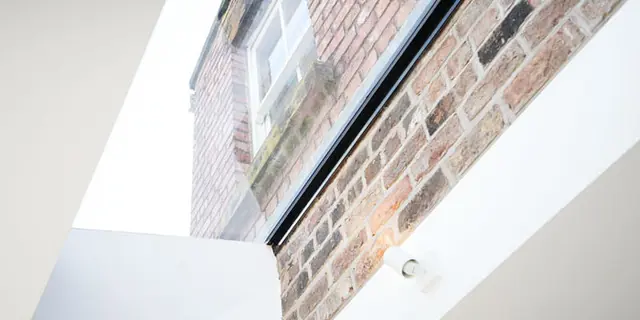Roof Light and Door Options for Flat Roof Extensions
Flat roof extension with roof lantern often referred to as orangeries have become an increasingly popular home improvement amongst our customer over the past 10 years. Having supplied and installed hundreds of glazing packages to a large variety of this type of extension, we look at the door and roof light options available to the homeowner and the advantages and disadvantages of both.
Roof Light Options:
Many people looking for a flat roof extension are either looking for a replacement of their existing conservatory or an alternative to the traditional conservatory. The downsides of owning a conservatory (to cold in winter and to warm in summer) is why we are seeing so many homeowners looking for an alternative, however homeowners don't want to loose the benefits of a conservatory such as the large glazed areas and abundance of natural light. This is where the roof lantern comes in to play, opening up a flat roof with a roof lantern or flat roof light is a fantastic way to bring in direct sunlight to a more traditional extension and offers much better thermal properties than a conservatory roof.
Flat Roof Lights:
The modern flat roof light has come a long way in recent years with many options from a simple 600mm*600mm roof light to a 12M*2.4M multi panel roof light with structural glazing fins. If you are looking for a simple an unobtrusive way of bringing in more light to your new space look no further than the flat roof light.
Advantages:
- Modern Aesthetics: The simple and clean lines of the flat roof light make them the clear choice for anyone building a modern flat roof extension. Available in various colour with multiple glazing options out black and anthracite grey framed roof lights are most popular with modern homeowners.
- Versatility: Our flat roof lights can be installed on completely flat roof or pitched roof making them extremely versatile. Glazing thickness can also be customised to achieve different U values.
- Unobstructed Views: The flat roof light compared to a pitched roof lantern offers an unparalleled view of the sky above with single glass panels with widths of up-to 3M's available in our standard range and larger in bespoke projects.
- Space Efficiency: The additional of a roof lantern create a void in the roof giving a greater sense of height to the space and overall making the space feel bigger. Externally the roof light does not protrude very far from the top of the roof making the external obstruction minor.
- Thermal Efficiency: Our flat roof lanterns come with 44mm triple glazing as standard making them extremely thermally efficient.
Disadvantages:
- Drainage Issues: Flat roof lanterns do suffer from drainage issues compares to roof lights, however providing the correct fall is set the our roof light have been tested and will drain perfectly.
- Limited Ventilation Options: The majority of flat roof lanterns are fixed, we do have options for opening flat roof lights however this does increase cost as the entire roof light must open. This is only really suitable for smaller roof lights.
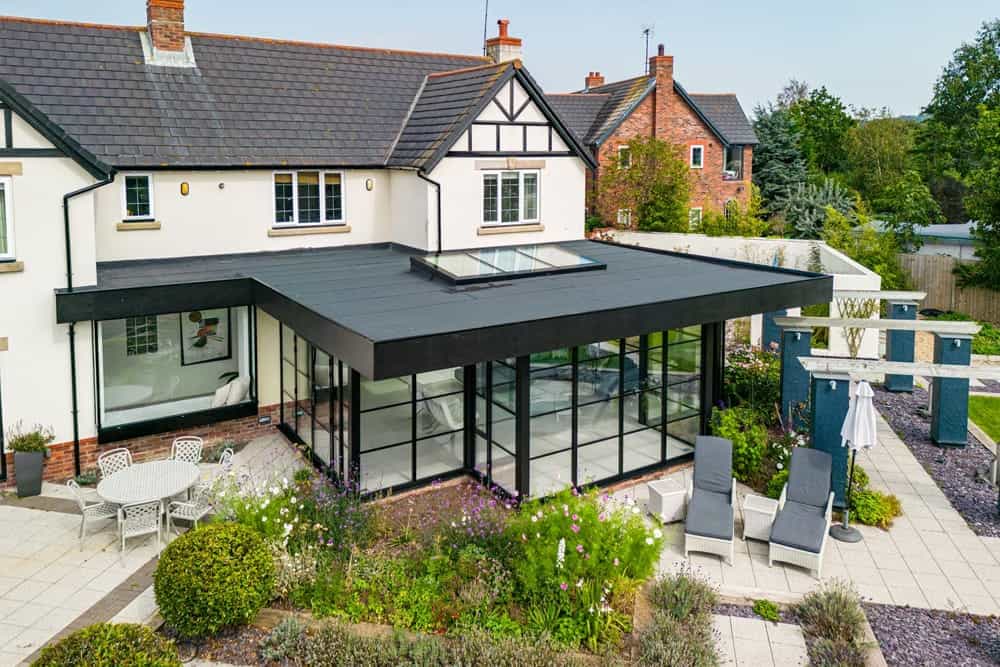
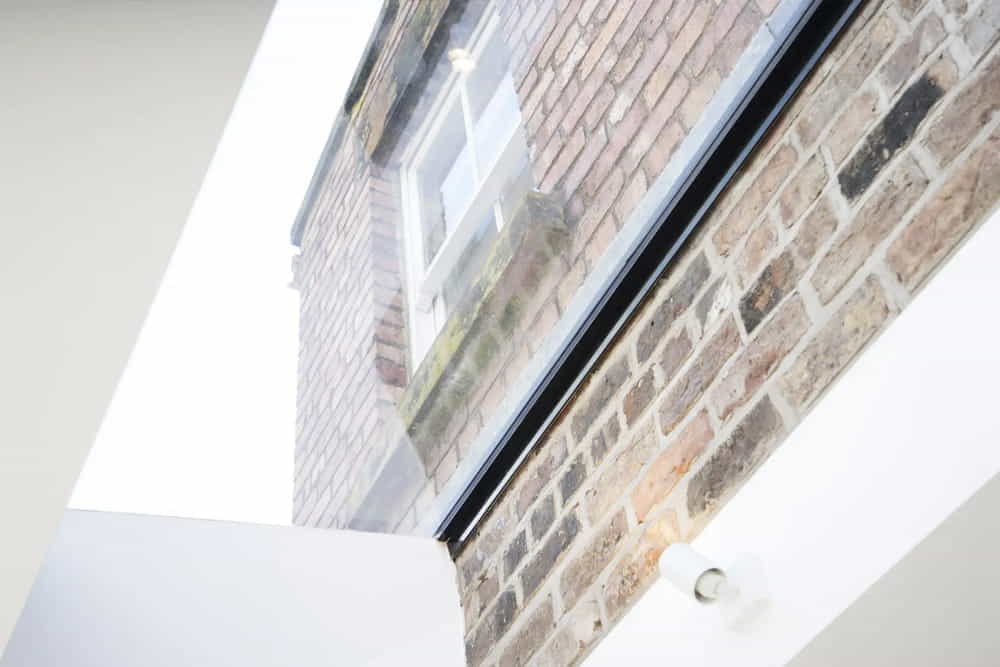
Pitched Roof Lights:
Roof lanterns grew to popularity during the 16th century where owners of high end homes wanted to build an orangery to grow citrus trees year-round. Roof lanterns remained the property of the upper class until the 19th century where more modern technology enabled the manufacture of cheaper roof lanterns.
Advantages:
- Efficient Water Drainage: Roof lanterns are made with a pitch on all 4 sides enabling efficient drainage.
- Enhanced Ventilation: With multiple panels and section ventilation can be added with ease to a single or multiple panels.
- Architectural Character: The pitched roof lantern that we know today is synonymous with traditional architecture and we instantly associate this with character and detail of traditional buildings. On top of this Roof lanterns often feature detailed mouldings and decorative finials adding a sense of style and grandeur to the home.
- superior Insulation: Roof lanterns are available is a wide range of glazing options and thermally broken frame for giving enhanced insulation.
Disadvantages:
- Design Limitations: The complexity of the roof lantern design can clash with more modern properties and are not always suitable, however are all glass range can be a solution to this issue.
- Installation Complexity: installation of a roof lantern has many steps and must be installed by a trained glazer to ensure the property remains dry year round.
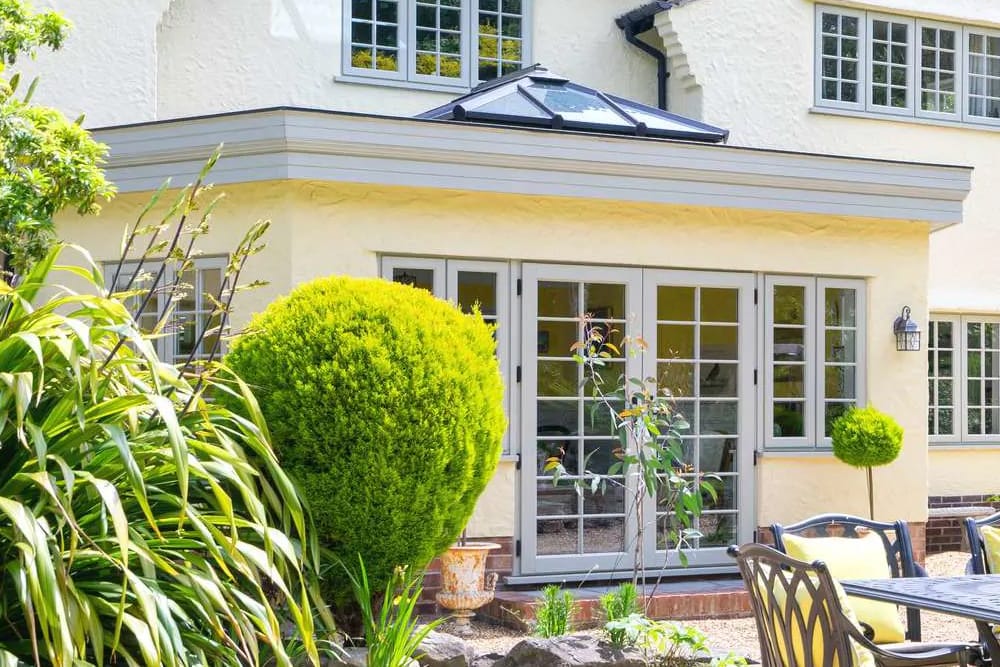
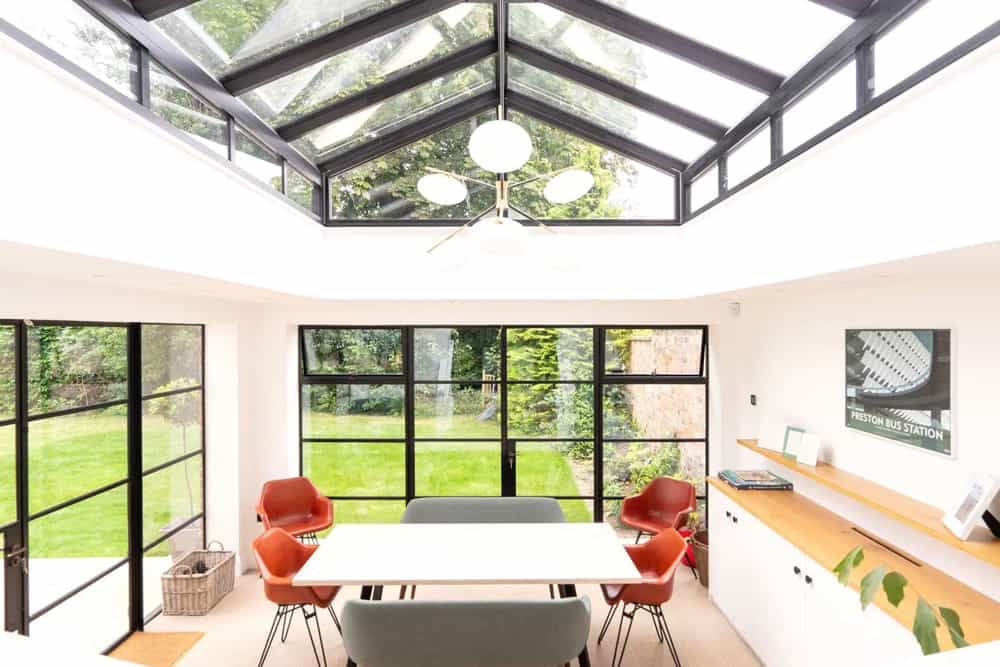
Conclusion
Roof lights and lanterns clearly both have a role to play in architecture. For the most part owners of more modern properties tend to go with the flat roof lantern whereas those looking for a more traditional route will opt for the roof lantern. However many traditional property owners looking to create a contemporary space at the rear of their home will opt for a flat roof light.
Door Options:
With a huge range of door options the majority of our flat roof extension projects feature 3 main categories of doors French, bi-folding and sliding. We delve into the different option and look at the benefits and downsides of each.
French Doors:
French doors are the go to choice for the more traditional and historic property owner. With the options for top and side light although you only have two opening leaf's there is still the options to add lots of glazing.
Advantages:
- Timeless Elegance: Astragal bars, timber moulding and decorative hardware are just some of the features that help to add character and charm to these doors stepped in history.
- Wide Opening: With two opening doors it is still possible to achieve a wide opening of 1800mm on a set of French doors.
- Architectural Appeal: Symmetry and classical design are some of the features that have stood the test of time and make French door stand out as a choice that is still relevant in todays market.
- Ventilation: French doors offer fantastic ventilation when both door are open and can also feature side lights with smaller opening panels for controlled ventilation.
Disadvantages:
- Space Requirements: The opening leaf's on the French doors require a clear space to open limiting the usable space outdoors.
- Maintenance: If going for a set of timber French doors more maintenance will be required compared to aluminium and UPVC alternatives.
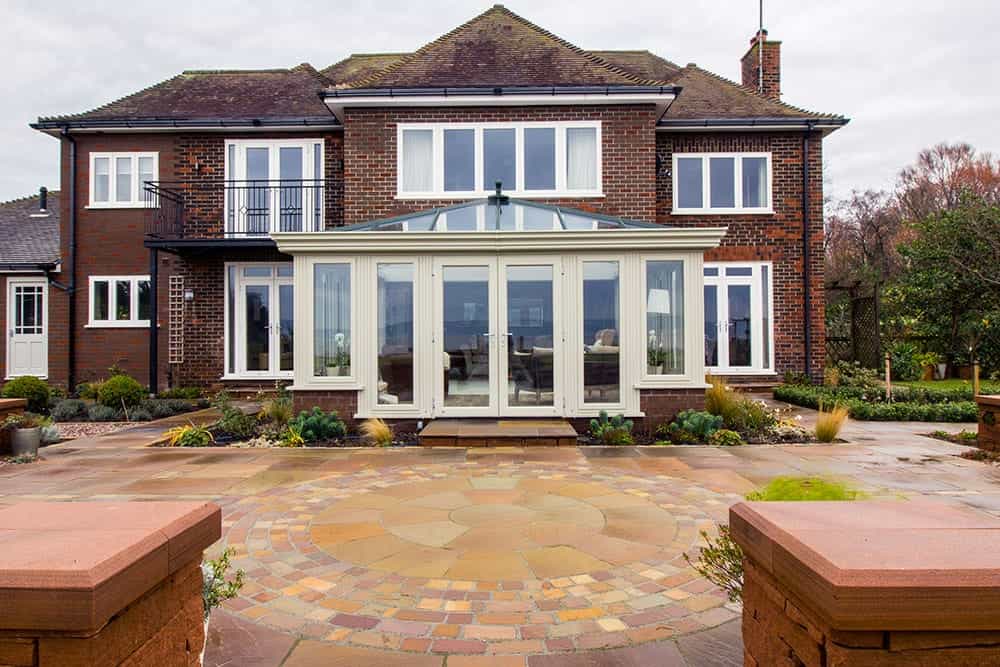
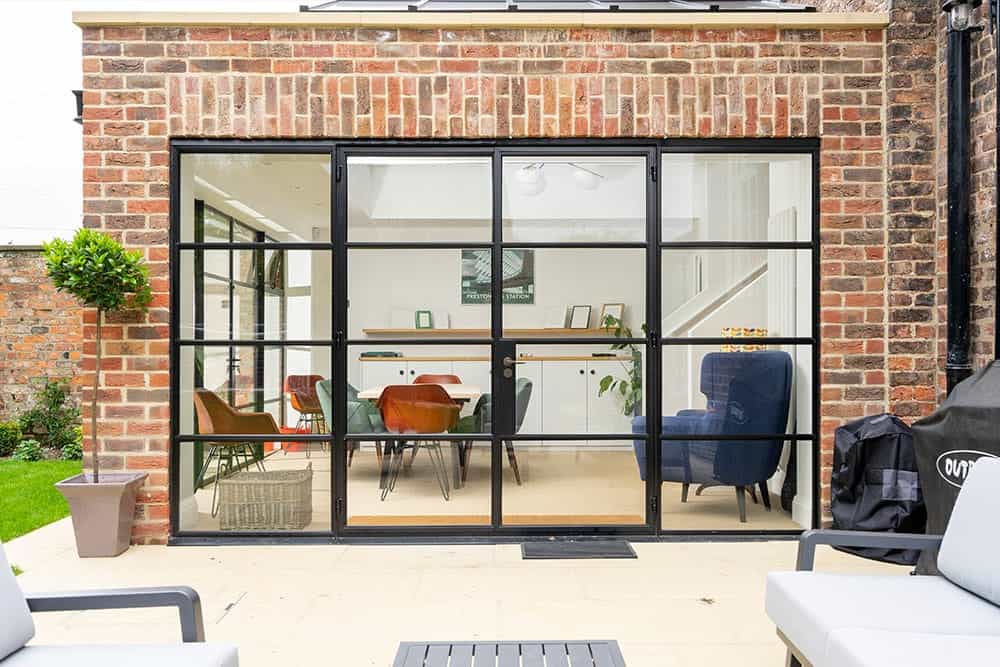
Sliding Doors:
In more recent years we have seen the introduction of structural glazing into out aluminium sliding doors. This has results into much larger panes of glass and thinner frames. The result is soaring interest in the supply and install of our sliding doors into flat roof extensions.
Advantages:
- Space-Saving Design: sliding door do not extend outwards from the frame, open or closed these doors do not require extra space, perfect for those with tight external spaces.
- Contemporary Aesthetics: Streamlined and simple our sliding doors are the ultimate modern solution.
- Unobstructed Views: Almost entirely made out of glass there is no door that offer such an unobstructed view of your garden.
Disadvantages:
- Limited Opening Width: As the doors slide instead of fold the ability to open the entire door is no possible like a bi-folding door.
- Maintenance: Sliding door require period cleaning and lubrication of sliding tracks to ensure optimal operation, however we recommend all homeowner clean and lubricate all windows and doors at least once a year.
- Sealing Issues: Sliding doors must be installed by trained professional and bushes must be replaced when worn to ensure optimal weather and thermal performance.
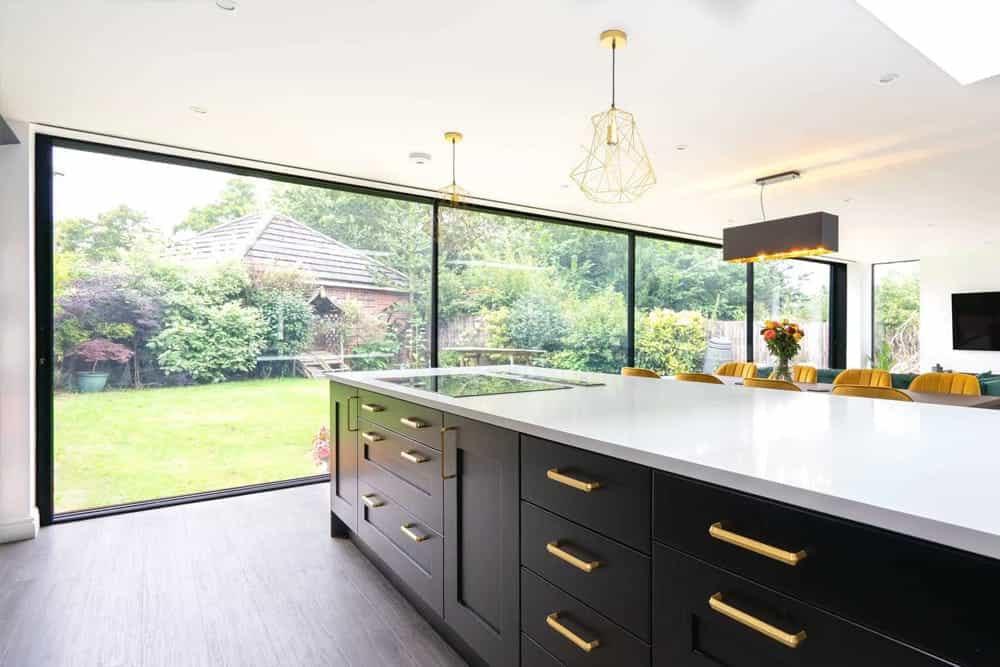
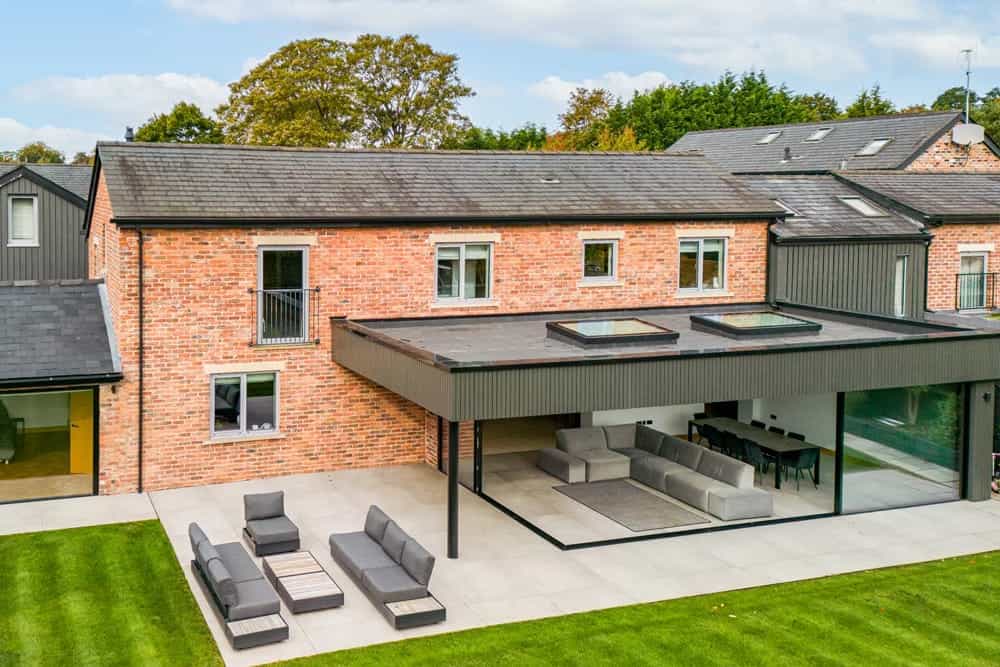
Bifold Doors:
Bi-folding doors are the perfect solution for those that like to entertain, the ability to completely collapse all doors and open up an entire section of wall gives unrivalled flexibility year round.
Advantages:
- Flexible Opening Options: Bifold doors often various configurations including single opening leaf's for daily access and single sided or dual side door folding which is completely customizable to you and your home.
- Versatility: The bifold door is very versatile, with individual panels making up one larger door there is little limit to the size of these doors making them suitable for many projects.
- Maximum Natural Light: With many doors there is a large amount of light flow through the multiple glass panels.
- Space Optimization: When all doors are opened the barrier between the indoor and outdoor spaces is removed creating a fantastic flow between the different spaces.
Disadvantages:
- Cost: Larger bifold doors can be more expensive due to the structural complexity and various moving parts.
- Complex Installation: The installation of bifold doors is more complex and time consuming that sliding doors. Tight tolerance mean lots of adjustments in order to get the doors operating perfectly.
- Maintenance: Bifold doors require more maintenance than other options due to large number of moving parts.
- Thicker Mullions: The mullions on bifold doors are much thicker than sliding doors due to the structural nature of the frames. Combined with the large number of panel the view is much more obstructed when compared to a sliding door.
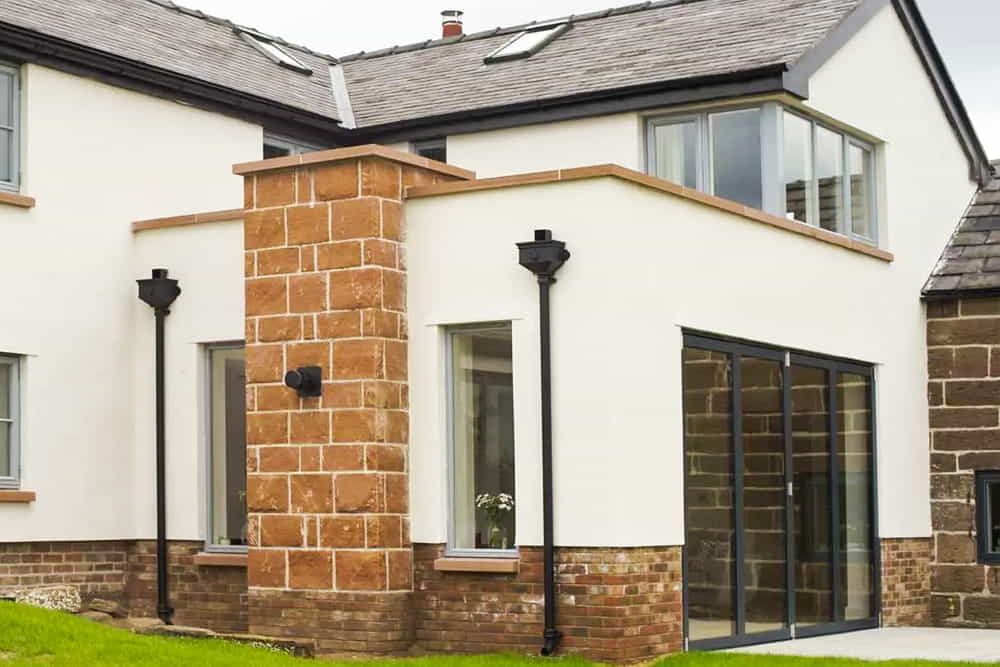
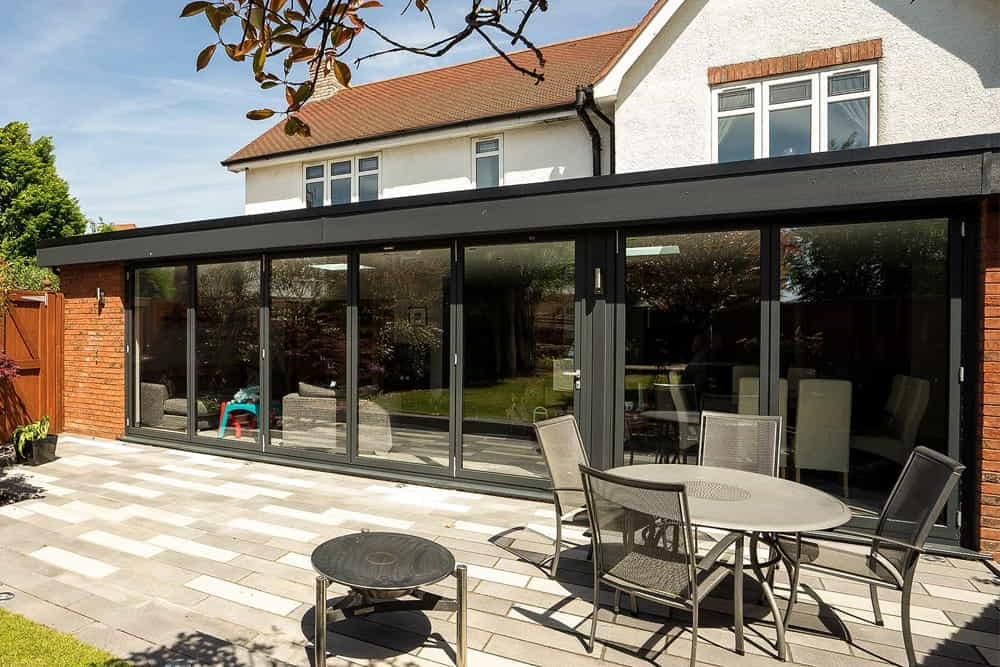
Conclusion:
The choice of roof lantern and door option when designing a new flat roof extension is really a matter of taste and preference. Personal taste, building design and space available are all factors that need to be considered. When choosing a French door we find that in more cases a roof lantern is the most appropriate choice. For modern sliding doors the flat roof light is the most popular option. And with the bifold we see an equal amount of interest in both the roof light and roof lantern.
